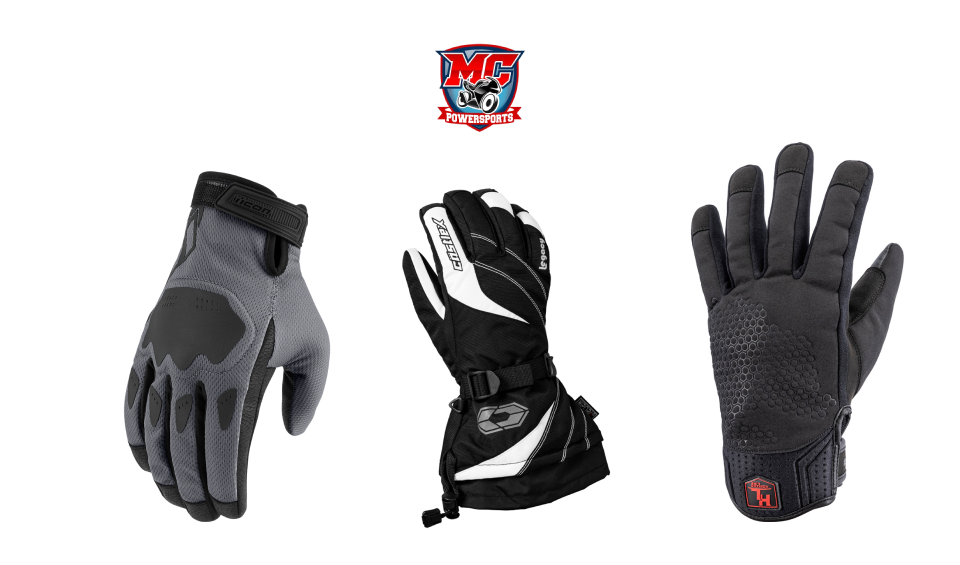How a Proper Glove Fit Enhances Your Safety and Riding Experience
Posted by undefined
It is always recommended to wear proper motorcycle riding gear before heading out on the road, whether you’re going to grab a Snickers or traveling cross-country. Now, the arguable holy trinity of riding gear would be helmets, boots, and, this is also our topic for the day, gloves.
We’ll focus on the importance of properly fitting riding gloves in this blog and how they can make or break your riding experience plus safety.
Why Glove Fit Matters
Your hands are perhaps the most active part of your body when riding, in terms of the sheer number of physical moves they have to make. They twist the throttle, pull in the clutch, grip the brakes, steer the handlebar; they’re quite busy.
If you wear ill-fitting gloves, you’ll lose the connection and control you have over the bike. Motorcycle gloves ought to have a snug but mobile fit in order to truly keep you safe, confident and in control.
Too tight? They’ll pinch your hand and restrict movements. Too loose? Well, you’re likely going to have a difficult time grabbing the brake, accelerator and glove.
Protection in the Right Places
Motorcycle gloves, worth their salt, include padding, knuckle guards, reinforced palms, and even scaphoid protectors for wrist safety. If you own a pair of gloves that don’t have these, well, they’re generic gloves and not meant for riding.
Now, fit matters here too. If the fit of a glove is incorrect, the armor placement will be off. You want the knuckle guards, for example, to sit on top of the knuckles themselves, not the fingers. Too tight or loose won’t offer the protection advertised.
These features only work well if they sit in the correct places, right where your hands need them. A proper fit puts armor exactly where it counts. Loose or tight doesn’t protect; it just misplaces.
Choosing the Right Fit
Gloves, too, have a standard practice for measurement using which you can figure out what size would be appropriate for you. Here are some tips on how you can choose the best fitting motorcycle gloves:
- Use a tape to measure your palm’s circumference and finger length and then compare it to the brand’s chart. Every brand varies a bit in terms of size, so if, say, the Large of a brand fits you, it doesn’t necessarily mean the Large gloves of another would too. Numbers, however, do not mislead.
- Our general rule of thumb is “snug, not tight”. Your fingers should nearly touch the glove’s tips without being cramped. Extra fabric or bunching means you’ve gone too big.
- Make a fist, grip a throttle, squeeze a brake lever. Everything should feel smooth and natural.
- Leather stretches over time, so it should feel a bit snug at first. Textiles don’t stretch, so accuracy is critical.

Different Riding Styles, Different Gloves
Now, another thing to keep in mind is the fact that the kind of gloves you get would, and should, vary based on your riding style.
For example, street gloves (which are often leather and textile) are preferred for daily wear. They’re versatile enough for all everyday situations and aren’t too bulky in the hand.
Racing gloves and adventure gloves are more purpose built. The former are built with pre-curved fingers, heavy armor, and designed to stay put even in crashes, whereas the latter are more breathable and flexible for long-distance touring.
Glove Safety Ratings
Motorcycle gloves carry the CE markings, which are tested against the European standards.
- Level 1: Basic, bare minimum protection
- Level 2: Greater impact resistance with reinforced areas
Again, whilst these markings do help when you’re making the purchase, they’re redundant if the gloves don’t fit right.
Conclusion
Your gloves should, eventually, start to feel like wearing a t-shirt or pants; you ought not even notice them. They should feel like an extension of you. The importance of proper riding gear cannot be understated, so you must wear, at the bare minimum, properly fitting gloves with a helmet and riding boots.
A proper fit will keep you in control, extend the life of your gloves (yes, because gloves that are too tight strain stitching until it splits. Gloves that are too loose rub at stress points until fabric weakens), and, of course, protect you in case things go wrong. So, get it right, and ride with more confidence than ever before.
Frequently Asked Questions
What if I can’t try on the gloves before buying?
Measure carefully, compare against the brand’s chart, and remember—leather can stretch while textile stays fixed.
Are reflective details better on tight or loose fits?
They’ll work regardless, but a snug fit keeps reflective patches properly aligned and visible. High-visibility materials in riding gear reduce rider accidents, so they’re always a good idea.
How do I know when it’s time for new gloves?
When your gloves start to stretch to the point of loose stitching, the padding starts to thin, the armor has worn down; you know the integrity of the gloves is now gone, it is time to replace them.

